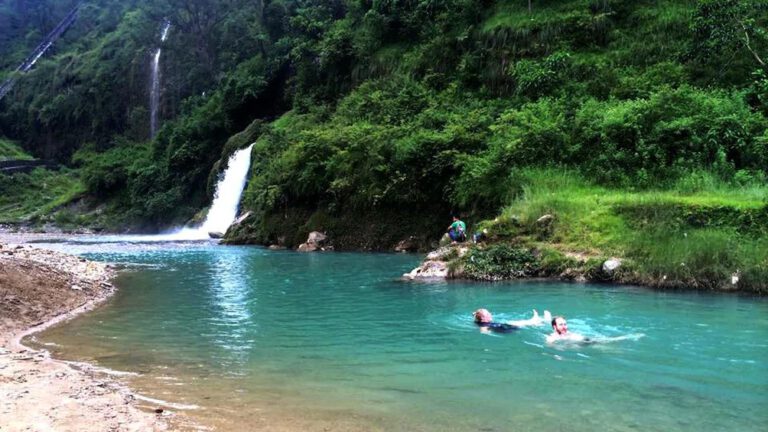Natural Attractions In Pokhara
Phewa/Fewa Tal
Phewa Tal ‘lake’ is the biggest lake which is the central attraction in Pokhara. You can walk along its edge or hire a boat (sail boat or paddle boat) and move around the Lakeside. It takes a day to explore the distant shores, villages, aquatic & bird life and to watch local fisherman collecting the day’s catch. Don’t miss the stunning reflection of the snow-capped Annapurna in the calm water of Phewa early in the morning.
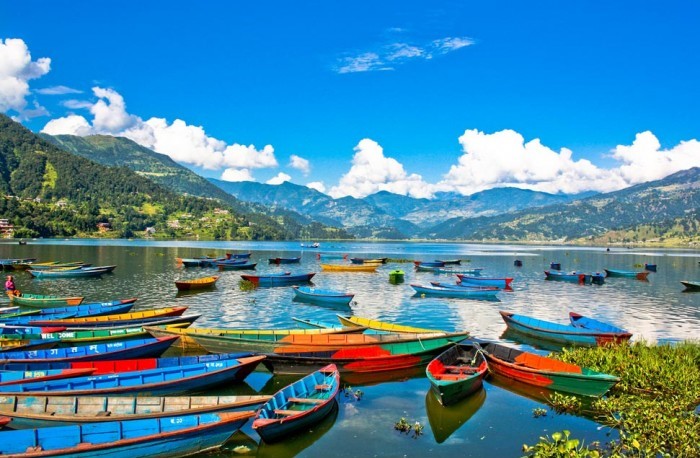
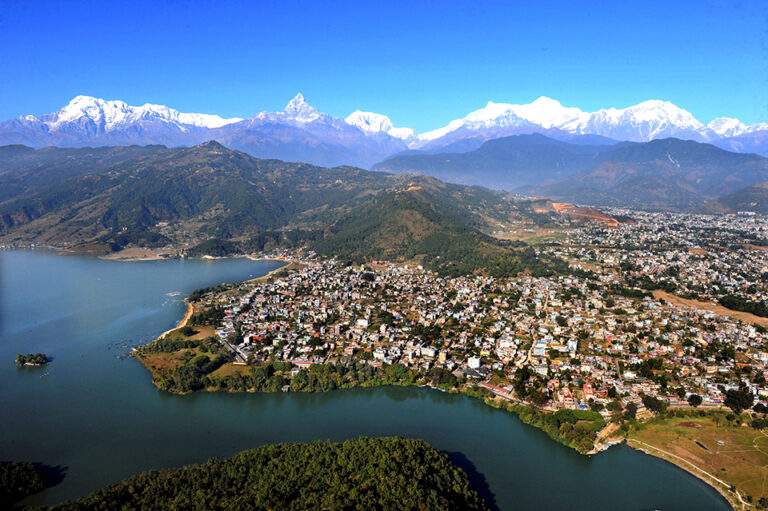
Begnas & Rupa Tal
These two picturesque lakes are perfectly serene and clean just 15 km. away towards east from Lakeside. A trip to these lakes makes a perfect day for overnight trip from proper Pokhara. The activities like swimming, boating and fishing are possible in Begnas lake. It is surrounded by hillocks and greeneries except towards the south which is the entrance to the lake. Its area is 3.73 sq. km. with round shape. There are many guest houses at the western shore of the lake from where one can have undisturbed views of the lake and the Himalayas.
Follow the road straight through Begnas Chowk ‘junction’, which climbs up the hill and reveals the isolated beauty of Rupa Tal ‘lake’ downward to the right hand side. Rupa is extended from east to west with narrow width. Its total area is 1,15sq. km. and the shape looks like a serpent.
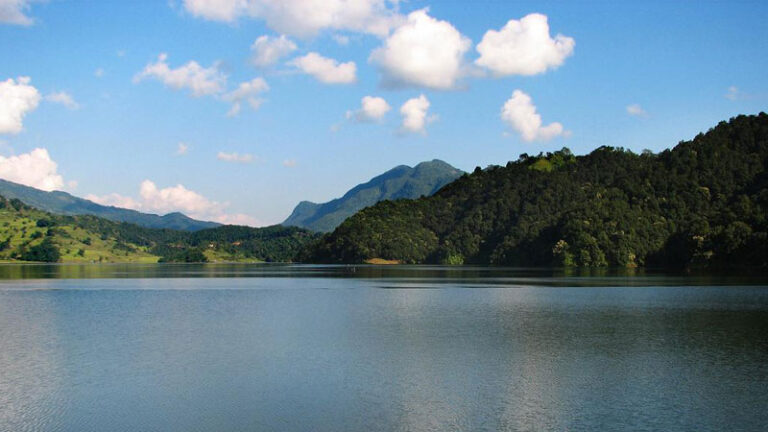
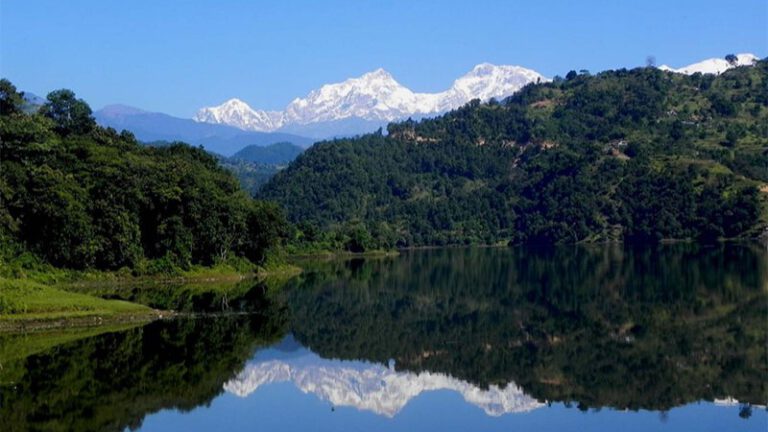
It is said that this lake looks like a lizard, changing its color from red, blue, green to other different colors. There are many medicinal plants in the vicinity. One can have a very clear view of the mountain ranges from the hillock which separates the two lakes: Begnas and Rupa. While visiting Rupa one can also have an opportunity to observe the Fishery Research Center.
Seti Gorge
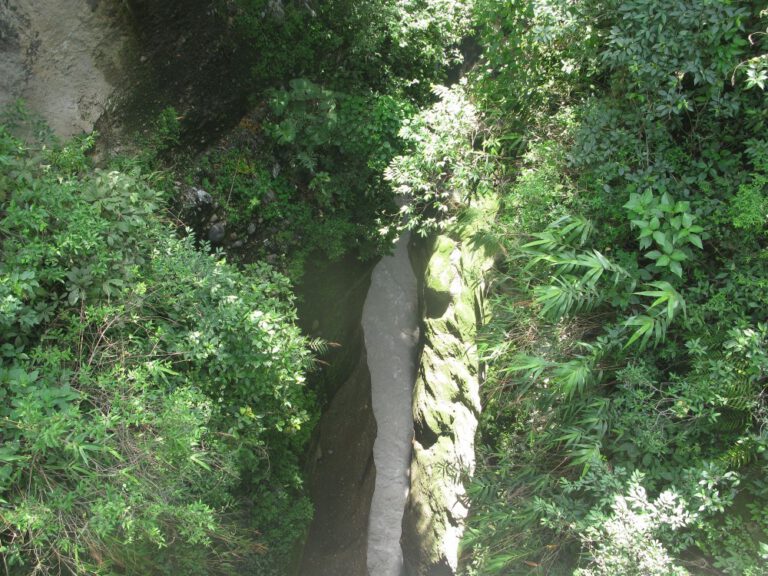
This is another 7 km. long fascinating sight in Pokhara which begins from K.I. Sing Bridge to Dhungesanghu with openings at Tulsighat and Ramghat. The snow fed Seti river flows along a series of gorges through the heart of Pokhara. Its murmer can be heard and foaming water can be viewed from a bridge near British Camp, Narayansthan Bridge, Mahendra Bridge and Prithivi Highway Bridge near the Pokhara stadium. The river flowing more than 47 meter below the bridges struggling its way through an incredibly narrow canyon gives a thrilling sensation. One can easily and/or clearly observe the turbulent flow of water while watching from the bridge. On the left hand side, while crossing the new bridge, towards Gurkha Memorial Museum, there is the old K.I. Sing Bridge made of cement and concrete. It is the first concrete bridge constructed in Pokhara.
Bhim Dhunga
There is a huge ingenious granite black rock like a big globe of about 8 m. height and circumference of 26 m. The stone lies in P.N. Campus complex in Pokhara. This round rock is named as Bhim Dhunga. This is the biggest rock in Pokhara valley. Bhima is one of the brothers of Pancha Pandava ‘five pandavas’ mentioned in Hindu mythology belonging about 1500 BC. According to the myth as narrated by the local people, the rock was thrown as a shot-put by Bhima, physically the mightiest brother of pandavas, from Bhimad. So it has its name as Bhim Dhunga. Dhunga in Nepali means ‘rock’ or ‘stone’. Local people have established a deity called Kali on the same spot. So it is also called Bhim Kali.
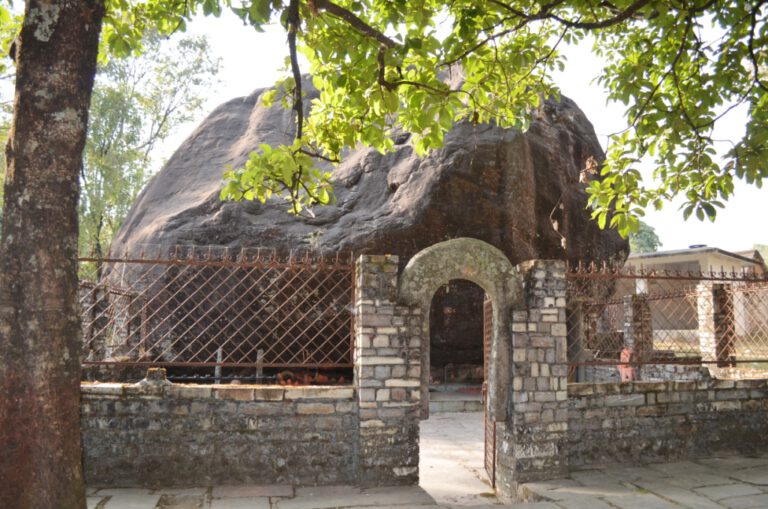
Gupteshor Gufa
It is located 3 km. to the south west from Lakeside near Devi's fall. It is believed to be five hundred year old and was discovered in 1992. The cave is a popular pilgrimage site. There is a natural image of Lord Shiva, which was naturally found beneath the earth. Well-maintained steps are constructed with the provision of sufficient light to enter the cave. This cave is one of the outlets of Devi’s fall. There is a small tunnel behind the image of Shiva that links the cave to the Devi’s fall. It takes about 10 minutes to reach Devi’s fall through the tunnel. Visitors to this cave have the opportunity to enjoy the underground view of the Devi’s fall.
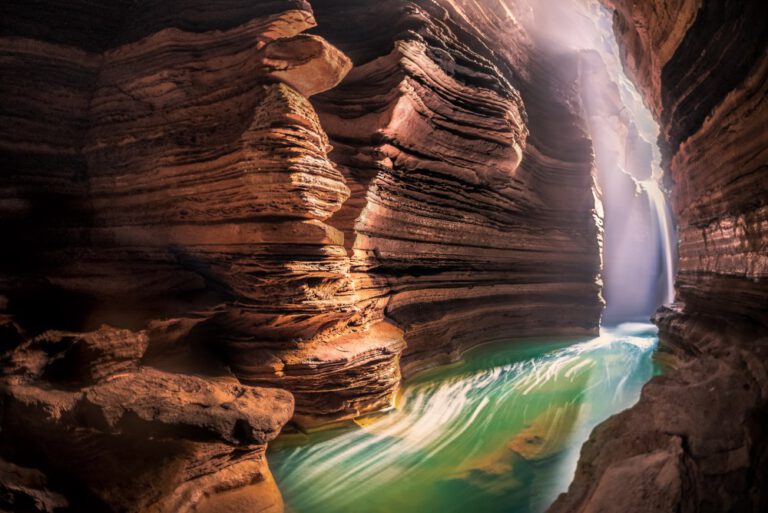
Mahendra Cave
This is a large limestone cave famous for its stalactites and stalagmites, located 9 km. to the north-east from Lakeside. This place was first explored by British expedition team in 1978 and then explored again by Daniel Gebuer in 1980. The length of the cave is 215 meter long and is stretched over 50 ropanies of land. The width of the entrance is 16 meters whereas in the center it is only 3.5 meter wide. In the beginning, this cave was called Bat Cave by the local people. Later on, it was named after the name of the then king Mahendra after his visit to the cave in 1960.
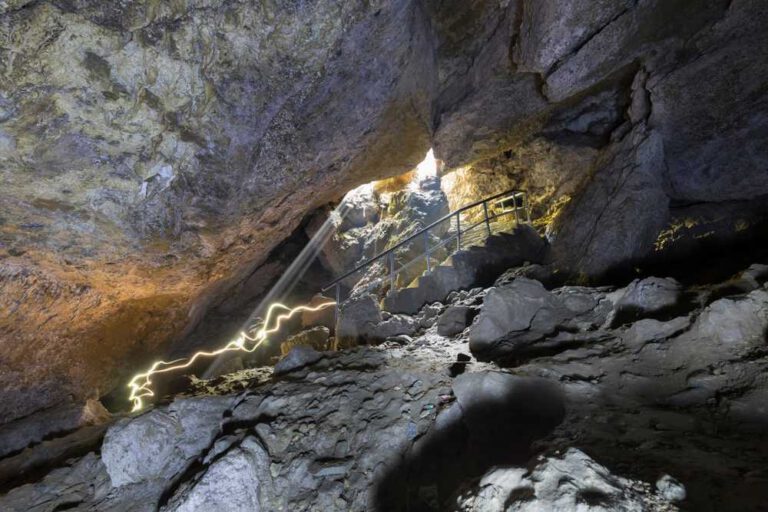
Bats' Cave
With its name as Chamere Gupha in Nepali, Bats cave is the popular name in English. This cave is located half kilometer west from Mahendra cave. It is still a popular and adventurous cave to get into. The natural environment of this cave has attracted thousands of bats as they feel no disturbance inside. People usually enter inside the cave carrying a torch light with a sense of adventure.
The visitors must be cautious, since the cave is not yet equipped with electricity and the path is also full of sharp stones. The water dripping from the ceiling makes the path wet and slippery. One can hear haunted sound inside the cave even from the entrance. The area of the Bats’ Cave is 10 m. depth and 6 m. height along with its 135 m. length. There is a small stream flowing deep under the rock. At the far end of the cave there is a small narrow hole. However, the cave at its center is amazingly spacious. There are large boulders cut out of solid rock inside the cave. Standing on the boulder you can look around the cave. In the middle of it you can see hundreds of bats hanging on the ceiling. Walking through the darkness in the light of a torch, and finding the exit of the cave is indeed a tough and adventurous task. If one is not courageous enough, better not to enter the cave.
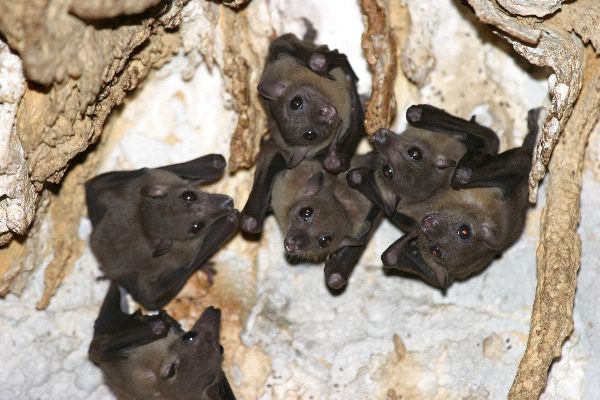
Devi's Fall
Davi’s Fall is a fascinating waterfall located 2 km. southwest from Lakeside on the Siddhartha high way towards Syangja. The fall exists because the over flow or excess water of Phewa Lake is drained out through a hole and water runs underground to a distance of about one kilometer down which mingles with a rivulet called Phusre khola ‘rivulet’. The hole is about 29 feet in diameter and 50 feet deep. A big flow of water speedily flowing down into the mouth of the cave exposes lovely rainbows flickering unsteady into the water vapor. Then the big mass of water flows invisibly and vanishes below the hole which provides extremely exciting and pleasant feelings. The local name for the waterfall is Patale Chhango.
The name Patale Chhango in Nepali has become popular among the tourists and tourism operators as “Devi’s Fall” after a miserable death of a Swiss lady by slipping in the water fall in 1961.
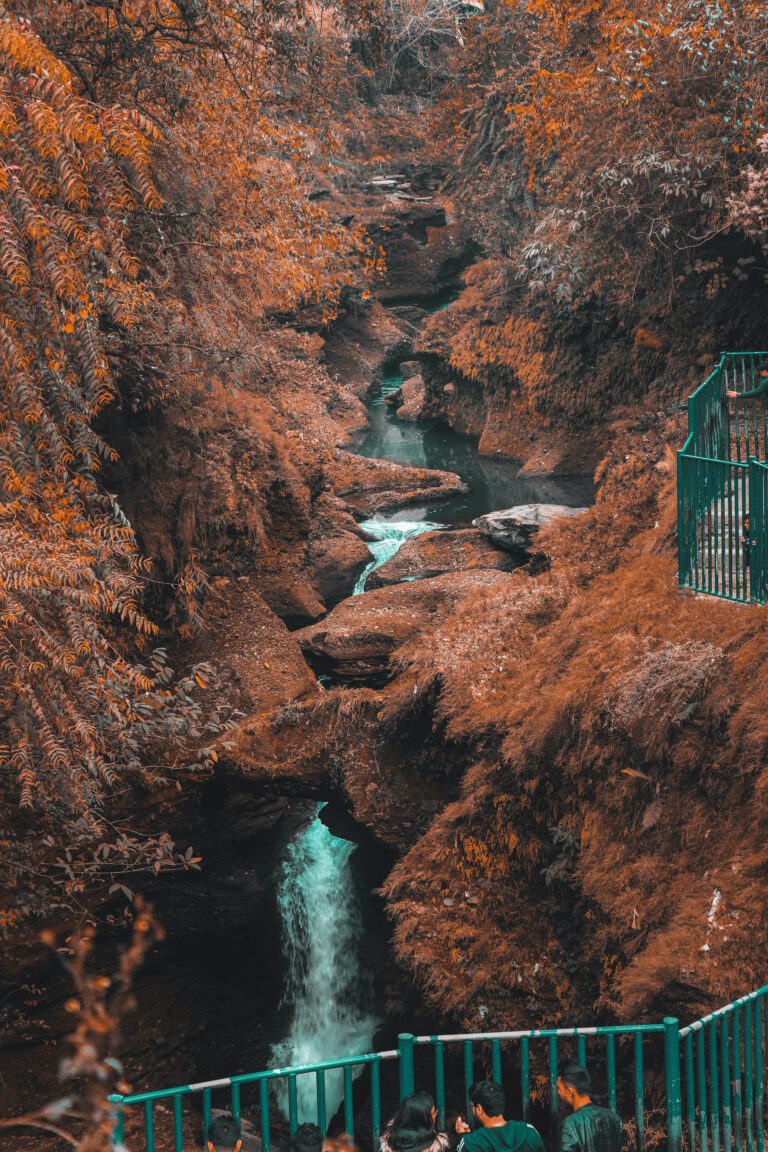
Mountains
Pokhara is the only place in the world from where you can wonder 8000 m. high peaks staying below 1000 m. from sea level. Mt. Machhapuchhre (Fishtail) is one of the most prominent peaks. It is regarded as a holy mountain, and therefore, it is forbidden to be climbed. Two of the world’s 14 highest mountains, Dhaulagiri and Annapurna can be seen from various parts of Pokhara city. This is not enough, we can view the whole range of mountains from Dhaulagiri to Manaslu in a glance if we just make a half an hour hike from Pokhara to any hilltops.
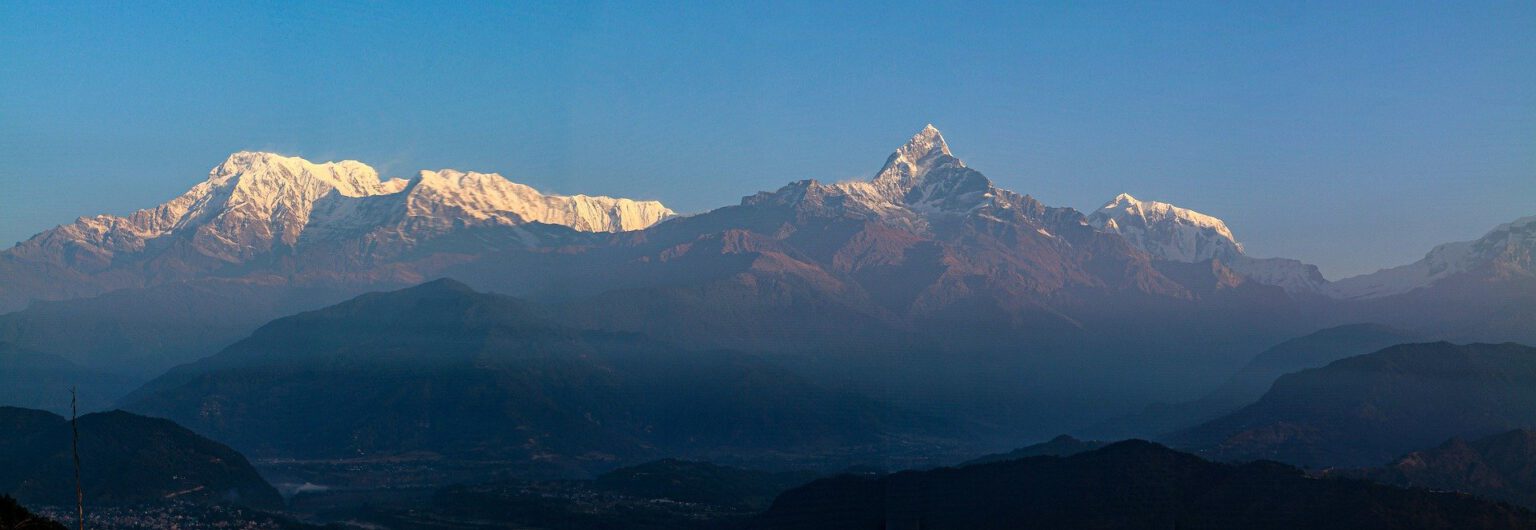
Fewa Power House
Fewa Power House – the first hydro power station in Pokhara, is a canal drop type power station having an installed capacity of 1.0 MW with an annual design generation of 6.5 KWh. and located approx 5 km south from Lakeside at Birauta, Pokhara. It has 215 steps down from the edge of the cliff to go to the power station. It is an interesting place to visit with beautiful attraction of waterfall, river, natural swimming pools, cliffs, caves, and landscapes.
